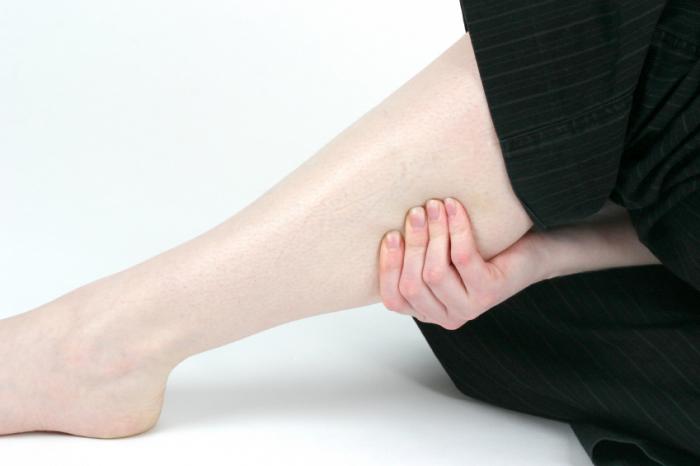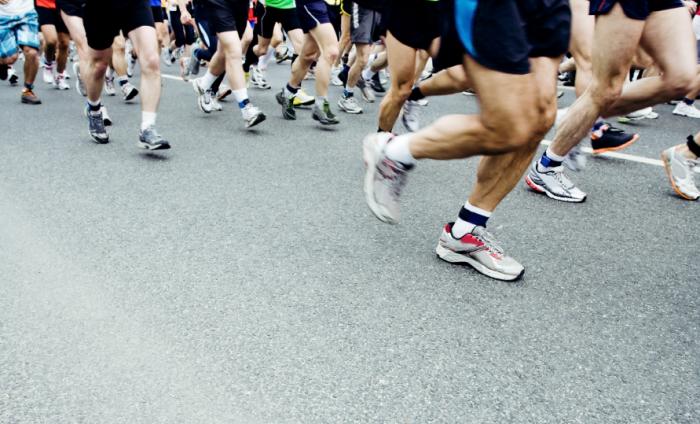What is leg pain?
Leg pain is a general symptom with a wide range of causes, many of which, such as injury, may be obvious. However, hiding behind a case of leg pain may be a less obvious condition calling for medical attention, diagnosis and treatment.
What is leg pain?
Pain in the feet, ankles, knees or hip is typically dealt with individually and separately from 'leg pain' in general, and in any case, leg pain is said to occur anywhere between the groin and ankle, thus excluding the hip and feet.1
Pain can be experienced in a number of different ways. Pain in the leg, as in other parts of the body, can be described as sharp, dull, numbing, tingling, burning, aching, and so on.
Pain can be acute (short-term) or chronic (long-term), and can be rated on a scale of severity from mild to severe, often rated on a numerical scale.
Sensory neurons (nerves) are responsible for our experience of pain, and these are triggered by stimuli such as high levels of pressure, high or low temperatures and chemicals, which can be released by tissue damage.2
What causes leg pain?
The obvious causes of leg pain are injuries, perhaps sustained during a sports game, or due to an accident - damage that doctors call trauma.
Since the causes of trauma pain are obvious, and the treatment is applied accordingly, this article deals with leg pain that is not associated with traumatic injury.
Sports can also cause injury in a less immediate way - shin splints, for example, are caused by excessive exercise.3
Long-distance running is associated with a higher incidence of leg pain of numerous types - bone, musculo-tendinous, and vascular.4 Around half of people running more than three kilometres, who train steadily and regularly take part in a long-distance run, sustain a running-related injury each year.4
Three broad areas cover the medical causes of leg pain (follow the links for more MNT detail on individual conditions):3,5
Neurological (nervous) causes, including:
- Neuropathy
- Restless legs syndrome
- Trapped nerve
- Sciatic nerve pain
Musculoskeletal, including:
- Arthritis, which affects joints - the hip, knee, or ankle
- Muscle, tendon or ligament strains - for example, due to sports injury
- Night cramps
- Exertional/chronic compartment syndrome
- Medial tibialstress syndrome
- Stress fracture
Vascular (relating to blood vessels), including:
- Intermittent claudication due to peripheral vascular disease (PVD)/peripheral arterial disease (PAD)
- Deep vein thrombosis(blood clot).
Signs and symptoms

Leg cramps
Leg cramps are transient episodes of pain, usually for several minutes, when muscle - usually the calf at the back of the lower leg - goes into a spasm, which cannot be controlled.1,6,7
.
There is a tightening sensation during cramps, which are more common at night and in older people - an estimated third of people over 60 years of age suffer the problem.7
Claudication
Leg pain caused by atherosclerosis has distinguishing features and is known as claudication or intermittent claudication. The word claudication is from the Latin word meaning limp.8
Other terms for this atherosclerotic disease are: peripheral arterial disease, peripheral arterial occlusive disease or peripheral vascular disease. The condition sees a restricted blood supply reaching the leg muscles.9
Claudication produces a leg pain that, in classic cases, is:8,9
- A cramp-like muscle pain during exercise or exertion
- The cramps consistently occur after the same walking distances
- The pain, usually in the calf, eases with rest, and is relieved after 10 minutes.
Many cases of claudication are not classic in this way, many show no symptoms, or produce a pain that is not typical, perhaps in the thigh or buttock.8,9
Sports injuries
Musculoskeletal injuries sustained by sporting activity fall into four broad groups, and this applies for leg injuries, too:10
- Overuse injuries from excessive sport
- Blunt trauma
- Fractures and dislocations
- Acute soft-tissue sprains and strains.
Sports injuries to the leg within these broad groups would run into a long list, so we will deal with selected causes of leg pain.
Shin splints are an example of an overuse injury. The shin pain cannot be explained by an obvious cause such as a fracture.
Activities like jogging, running and hiking create repetitive impact forces that overload muscles and tendons. Shin splints produce severe localized tenderness in the muscles, and sometimes bone pain.10
Stress fractures also result from repetitive insults sustained during sports, but typically when the intensity has changed - occurring, for example, in the feet of runners who have changed the intensity or timing of their workouts too quickly.10
These bone fractures do not result from a one-off injury, and the fractures are small. The pain is felt during the exercise, and its onset is increasingly earlier in a workout, possibly reaching a point that makes the exercise unbearable.
Popliteus tendinitis is another overuse injury. It produces knee pain during downhill running, and is caused byinflammation to the popliteus tendon, which is important to knee stability.10
Hamstring strain is yet another overuse injury, often associated with running. It gives rise to an acutely painful area in the rear of the thigh muscle, due to a partial tear. This usually develops because of inadequate flexibility training, or poor warm up and stretching exercises before an activity.10
Compartment syndrome
Injuries to the leg - usually the back of the lower leg - that result in fractures or severe bruising can lead to compartment syndrome, in which the pain is usually disproportionate to the injury.10
Compartment syndrome is caused by a swelling brought on by the injury, but within a confined volume, within a closed fascial compartment, where there is little room for expansion, and pressure increases.
This edema can continue to a serious extent, cutting off blood supply to the tissue (ischemia). In these cases, the early pain may be followed by paresthesias, paralysis, pallor and a lack of pulse at the area affected.10
Tests and diagnosis
The American Academy of Family Physicians (AAFP) has produced a triage chart for leg problems, flowing through a number of questions that help you to narrow down a potential diagnosis, and offering a prompt if medical attention is called for.
The AAFP algorithm begins by ruling out strains and broken bones, and differentiating the two, before dealing with other types of injury and finally teasing out potential medical problems.
Doctors work in a similar way during their process of diagnosis - they may develop a 'differential diagnosis' after a series of questions and answers to rule out obvious problems.
The doctor will want to examine the leg(s) and locate the pain. They will also elucidate the specific type of pain - whether dull and aching or sharp and stabbing, for example - and when it occurs and how severely.3
Specific injuries, such as those caused by sports injuries, may be investigated further, with tests including ultrasoundimaging, X-ray, CT scans, MRI, and bone scans.10
In cases of claudication - leg pain caused by peripheral arterial disease - the diagnostic process may include:11
- Ankle-brachial BP index - measurements of blood pressurein the arm and ankle during rest and after walking
- Ultrasonography - scans to test the characteristics of the circulation in the leg.
Treatment and prevention

Self-help for muscle cramps
Leg cramp, often called charley horse in the US, is a type of leg pain that, if other causes have been ruled out, does not call for further investigation, and treatment is limited to self-help measures.7
Stretching and massaging the muscle may help, but painkillers will not - since they are too slow to take effect. However, if tenderness persists after cramps, painkillers may be helpful then.7 No drugs are recommended for the treatment of simple leg cramps.6
For cramps affecting the calf, in addition to massage, the following can help:1
- Pull the foot up toward you while straightening the leg, or
- Walk around on heels until the cramp eases off.
Charley horse can be prevented through these measures:1,12
- Stretching before exercising
- Avoidingdehydration by drinking 8-12 glasses of water a day
- Stretching and massaging your legs.
Claudication therapy
Treatment for people experiencing claudication leg pain is important since they at a higher risk of heart attack orstroke.9
Peripheral arterial disease often coexists with other atherosclerotic conditions, such as coronary artery disease (which narrows the arteries to the heart and raises the risk of a myocardial infarction) and cerebrovascular disease (which can result in a stroke).9
A treatment program for claudication involves aggressively tackling cardiovascular risk factors through:9
- Smoking cessation
- Antiplatelet (anticlotting) therapy
- Walking exercise programs.
Sports injury treatment
An easy acronym is used in the approach to treating minor sports injuries in the form of leg sprains and strains: RICE, which stands for the following four elements:10
Running is a common cause of simple sprains and strains, but also of 'overuse injuries.'
- Rest - to prevent further injury and allow healing time to reduce swelling
- Ice (or a cold pack available commercially) - to reduce swelling, inflammation and pain
- Compression - with an elastic bandage to reduce swelling and pain
- Elevation - lifting the leg above the level of the heart so that gravity assists with draining and reduces swelling and pain.
Ice should not be applied directly to the skin (and so should be wrapped in plastic or a towel), and should be applied for 20 minutes at the most. Elastic bandages should not be wrapped too tightly, lest a swelling is caused further along.10
Pain can be treated with drugs such as acetaminophen or non-steroidal anti-inflammatory drugs (NSAIDs). If their use for an apparently minor injury is needed beyond 72 hours, specialist medical advice should be sought to investigate the injury.10
Periods of rest to avoid the same activity that caused the injury need not mean a loss of condition, since alternative exercise that does not affect the leg injury can be pursued. A return to the original activity should be graduated in its intensity so that flexibility, strength and endurance are gradually restored.10
